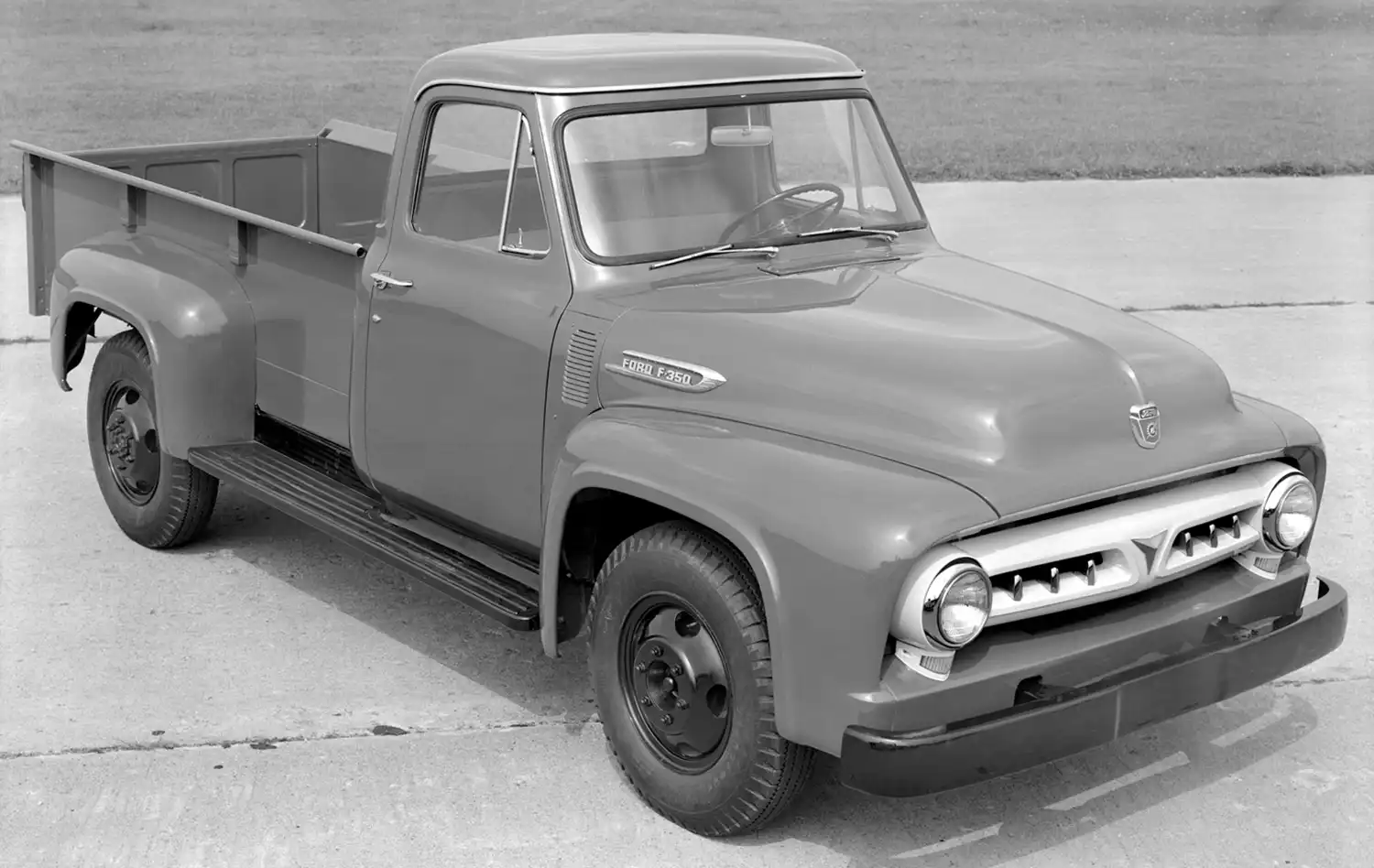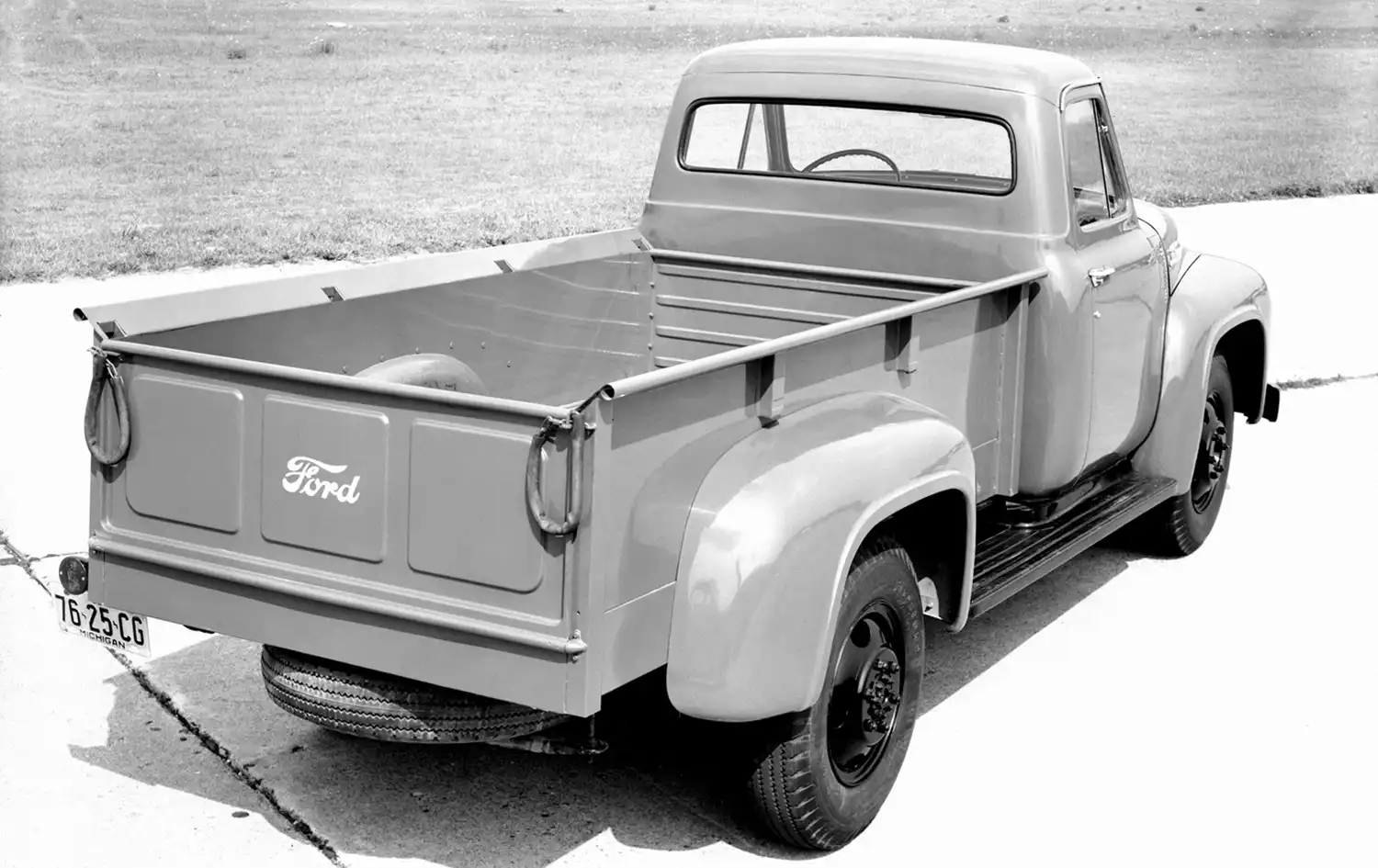
Imagine a time when America was truly building itself, quite literally from the ground up. In 1953, Ford rolled out a lineup of trucks that weren’t just new; they were revolutionary. Among them, the 1953 Ford F-250 Pickup stands out as a true icon. This isn’t just a vehicle; it represents a pivotal moment in automotive history, redefining what a pickup truck could be. The 1953 Ford F-250 Pickup was a workhorse that earned its legendary status.
A New Era for Ford Trucks
The year 1953 was incredibly significant for Ford. It marked their 50th anniversary, and to celebrate, they unveiled a completely redesigned F-Series truck lineup. It had been twenty years since Ford made such a comprehensive change to its truck designs. This ambitious redesign program, costing Ford $30 million, aimed to meet the demands of a rapidly modernizing post-war America.
The Second Generation Arrives
The 1953 F-Series launched the second generation of Ford trucks. This redesign brought many improvements over its predecessors. Ford introduced a fresh, more integrated look. They also improved the chassis and increased cab dimensions for better comfort. Significantly, the model nomenclature changed. The F-1 became the F-100, and the F-2 and F-3 combined into the ¾-ton F-250. The F-4 then became the one-ton F-350. This three-digit naming convention, introduced in 1953, continues to be used by Ford to this very day.
Design Innovations and User-Focused Features
The 1953 Ford F-250 boasted a design that perfectly blended functionality with a rugged aesthetic. Its new front-end appearance featured a redesigned grille and a wider, nested hood. This gave the truck a more modern and robust look compared to earlier models.
“Driverized” for Comfort
Ford’s designers didn’t just focus on outward appearance. They greatly improved the cabin experience. The 1953 F-Series trucks, including the F-250, featured what Ford proudly called a “Driverized” cab. This meant more room inside. There was also wider space for both the driver and passengers. These trucks offered improved visibility due to a larger, curved windshield. Optional interior amenities included a dome light, lighter, armrests, sun visors, and even a radio. These thoughtful touches made long workdays much more comfortable.
Powering the Work Ahead: Engine Specifications
Beneath its updated exterior, the 1953 Ford F-250 offered robust engine options. These powerplants were designed for reliability and the demands of heavy hauling. They ensured the truck could handle whatever task was thrown its way.
The Engines that Drove the F-250
For the 1953 F-250, buyers had a choice of two main engines. The standard was a 215 cubic inch (3.5L) Inline 6-cylinder engine. This “Cost Clipper” Six was known for its durability. It produced around 101 horsepower and 180 lb-ft of torque. For those needing more grunt, an optional 239 cubic inch (3.9L) Flathead V8 was available. This iconic V8 delivered approximately 100 horsepower and 194 lb-ft of torque. Both engines were paired with a 3-speed manual transmission as standard. A 4-speed manual was also available. This combination provided sufficient power for the era’s heavy-duty tasks. Top speed was around 70-75 mph, which was more than adequate for a work truck of that time.
Built Tough for Hard Work
The 1953 Ford F-250 was engineered for durability. Its chassis received significant upgrades. A robust ladder frame with numerous crossmembers provided immense strength. The F-250 was a ¾-ton pickup. It boasted a larger eight-foot bed and a higher payload capacity compared to the smaller F-100. This made it ideal for farmers, construction workers, and businesses needing serious hauling capabilities.
Practical Features for the Job
Key features that made the F-250 a true workhorse included a more rigid tailgate design. It often featured embossed “F-O-R-D” block lettering. The trucks also offered separately mounted running boards for easier access. The braking system utilized drum brakes, providing reliable stopping power for the loads it carried. These practical design elements highlighted Ford’s commitment to building trucks that could truly get the job done.
Lasting Impact and Collectibility
The 1953 Ford F-250 played a crucial role in establishing the F-Series as America’s best-selling truck line, a title it has largely held for decades. Its functional yet appealing design resonated with a wide audience. It bridged the gap between basic utility and increased driver comfort.
A Cherished Classic Today
Many 1953 Ford F-250 pickups are still around today. Enthusiasts often restore them or customize them into street rods. They remain highly sought-after collector’s items. Their robust construction and timeless style ensure their continued appeal. This enduring popularity speaks volumes about the quality and thoughtful design of these classic Ford trucks. The 1953 F-250 truly cemented Ford’s reputation for building tough, reliable, and capable trucks.
Disclaimer: The information in this article is historical and general in nature. Specific vehicle conditions, features, and precise specifications may vary for individual vehicles.
Source: Ford Heritage Vault
